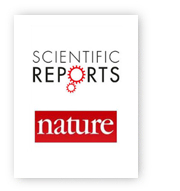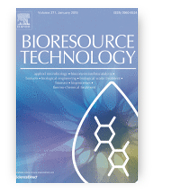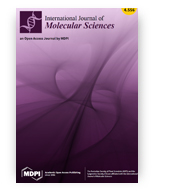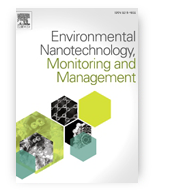Molecular characterization of direct interactions between MPP1 and flotillins
Agnieszka Biernatowska, Paulina Olszewska, Krzysztof Grzymajło, Dominik Drabik, Sebastian Kraszewski, Aleksander Sikorski, Aleksander Czogalla
Scientific Reports
 Flotillins are the major structural proteins in erythroid raft domains. We have shown previously that the dynamic nanoscale organization of raft domains in erythroid cells may depend on flotillin-MPP1 interactions. Here, by using molecular dynamic simulations and a surface plasmon resonance-based approach we determined that high-affinity complexes of MPP1 and flotillins are formed via a so far unidentified region within the D5 domain of MPP1. Significantly, this particular “flotillin binding motif” is of key physiological importance, as overexpression of peptides containing this motif inhibited endogenous MPP1-flotillin interaction in erythroid precursor cells, thereby causing lateral disorganization of raft domains. This was reflected by both reduction in the plasma membrane order and markedly decreased activation of signal transduction via the raft-dependent insulin receptor pathway. Our data highlight new molecular details concerning the mechanism whereby MPP1 functionally links flotillins to exert their physiological role in raft domain formation.
Flotillins are the major structural proteins in erythroid raft domains. We have shown previously that the dynamic nanoscale organization of raft domains in erythroid cells may depend on flotillin-MPP1 interactions. Here, by using molecular dynamic simulations and a surface plasmon resonance-based approach we determined that high-affinity complexes of MPP1 and flotillins are formed via a so far unidentified region within the D5 domain of MPP1. Significantly, this particular “flotillin binding motif” is of key physiological importance, as overexpression of peptides containing this motif inhibited endogenous MPP1-flotillin interaction in erythroid precursor cells, thereby causing lateral disorganization of raft domains. This was reflected by both reduction in the plasma membrane order and markedly decreased activation of signal transduction via the raft-dependent insulin receptor pathway. Our data highlight new molecular details concerning the mechanism whereby MPP1 functionally links flotillins to exert their physiological role in raft domain formation.
DOI:10.1038/s41598-021-93982-3
Interaction of 4′-methylflavonoids with biological membranes, liposomes, and human albumin
Aleksandra Włoch, Paulina Strugała-Danak, Hanna Pruchnik, Agnieszka Krawczyk-Łebek, Karolina Szczecka, Tomasz Janeczko, Edyta Kostrzewa-Susłow
Scientific Reports
 The aim of the study was to compare the impact of three synthesized chemical compounds from a group of methylated flavonoids, i.e. 2′-hydroxy-4-methylchalcone (3), 4′-methylflavanone (4), and 4′-methylflavone (5), on a red blood cell membranes (RBCMs), phosphatidylcholine model membranes (PC), and human serum albumin (HSA) in order to investigate their structure–activity relationships. In the first stage of the study, it was proved that all of the compounds tested do not cause hemolysis of red blood cells and, therefore, do not have a toxic effect. In biophysical studies, it was shown that flavonoids have an impact on the hydrophilic and hydrophobic regions of membranes (both RBCMs and PC) causing an increase in packing order of lipid heads and a decrease in fluidity, respectively. Whereas, on the one hand, the magnitude of these changes depends on the type of the compound tested, on the other hand, it also depends on the type of membrane. 4′-Methylflavanone and 4′-methylflavone are located mainly in the hydrophilic part of lipid membranes, while 2′-hydroxy-4-methylchalcone has a greater impact on the hydrophobic area. A fluorescence quenching study proved that compounds (3), (4) and (5) bind with HSA in a process of static quenching. The binding process is spontaneous whereas hydrogen bonding interactions and van der Waals forces play a major role in the interaction between the compounds and HSA.
The aim of the study was to compare the impact of three synthesized chemical compounds from a group of methylated flavonoids, i.e. 2′-hydroxy-4-methylchalcone (3), 4′-methylflavanone (4), and 4′-methylflavone (5), on a red blood cell membranes (RBCMs), phosphatidylcholine model membranes (PC), and human serum albumin (HSA) in order to investigate their structure–activity relationships. In the first stage of the study, it was proved that all of the compounds tested do not cause hemolysis of red blood cells and, therefore, do not have a toxic effect. In biophysical studies, it was shown that flavonoids have an impact on the hydrophilic and hydrophobic regions of membranes (both RBCMs and PC) causing an increase in packing order of lipid heads and a decrease in fluidity, respectively. Whereas, on the one hand, the magnitude of these changes depends on the type of the compound tested, on the other hand, it also depends on the type of membrane. 4′-Methylflavanone and 4′-methylflavone are located mainly in the hydrophilic part of lipid membranes, while 2′-hydroxy-4-methylchalcone has a greater impact on the hydrophobic area. A fluorescence quenching study proved that compounds (3), (4) and (5) bind with HSA in a process of static quenching. The binding process is spontaneous whereas hydrogen bonding interactions and van der Waals forces play a major role in the interaction between the compounds and HSA.
DOI:10.1038/s41598-021-95430-8
Dynamic modeling of the activated sludge microbial growth and activity under exposure to heavy metals
Konrad Matyja, Aleksandra Wasiela, Wojciech Dobicki, Przemysław Pokorny, Anna Trusek
Bioresource Technology
 The presence of heavy metals in the environment can lead to ecological and health problems. The evolution of biological systems, such as activated sludge, exposed to heavy metals is still underexplored. Therefore, this study sought to develop a model of microorganism activity and growth in activated sludge and used it to investigate the toxicity of five metals: Cu, Cd, Ni, Zn, and Ag. Patterns in the evolution of the toxic effects caused by these metals were similar at the beginning of exposure. Differences in toxicity between metal ions were noted for longer exposure times. Changes in model parameters indicate the influence of metal ions on the mass and energy balance of living cells. Decreases in new enzyme units and biomass production yields in contaminated activated sludge indicate a shift from anabolic reactions to metal homeostasis and resistance.
The presence of heavy metals in the environment can lead to ecological and health problems. The evolution of biological systems, such as activated sludge, exposed to heavy metals is still underexplored. Therefore, this study sought to develop a model of microorganism activity and growth in activated sludge and used it to investigate the toxicity of five metals: Cu, Cd, Ni, Zn, and Ag. Patterns in the evolution of the toxic effects caused by these metals were similar at the beginning of exposure. Differences in toxicity between metal ions were noted for longer exposure times. Changes in model parameters indicate the influence of metal ions on the mass and energy balance of living cells. Decreases in new enzyme units and biomass production yields in contaminated activated sludge indicate a shift from anabolic reactions to metal homeostasis and resistance.
DOI:10.1016/j.biortech.2021.125623
Comparison of Energy Consumption of Cereal Grain Dryer Powered by LPG and Hard Coal in Polish Conditions
Marcin Dębowski, Przemysław Bukowski, Przemysław Kobel, Jerzy Bieniek, Leszek Romański, Bernard Knutel
Energies
 The calculation method commonly used in the industry takes into consideration mainly fuel consumption (excluding electricity) and the amount of removed moisture which is reflected in the unit MJ·(Mg·%)−1. This is not a scientific approach because the result will change if the basic moisture is different (drying from 21% to 18% will consume less energy than drying from 18% to 15%). This paper aims to compare the energy consumption of two industrial continuous flow grain dryers powered by LPG and hard coal based on a comprehensive approach to energy efficiency calculation enriched with electricity consumption, flow measurements, and control of grain moisture. It could be useful for manufacturers who could use this method to generate more reliable data in their product datasheets, and it could also be legally regulated as an appropriate tool for calculating the energy consumption of agricultural grain dryers. According to the approach presented in this paper, the S428.CS construction powered by LPG gas had an energy consumption that was 6.14% lower than the DT2532 dryer construction, which used hard coal.
The calculation method commonly used in the industry takes into consideration mainly fuel consumption (excluding electricity) and the amount of removed moisture which is reflected in the unit MJ·(Mg·%)−1. This is not a scientific approach because the result will change if the basic moisture is different (drying from 21% to 18% will consume less energy than drying from 18% to 15%). This paper aims to compare the energy consumption of two industrial continuous flow grain dryers powered by LPG and hard coal based on a comprehensive approach to energy efficiency calculation enriched with electricity consumption, flow measurements, and control of grain moisture. It could be useful for manufacturers who could use this method to generate more reliable data in their product datasheets, and it could also be legally regulated as an appropriate tool for calculating the energy consumption of agricultural grain dryers. According to the approach presented in this paper, the S428.CS construction powered by LPG gas had an energy consumption that was 6.14% lower than the DT2532 dryer construction, which used hard coal.
DOI:10.3390/en14144340
CD91 Derived Treg Epitope Modulates Regulatory T Lymphocyte Response, Regulates Expression of Costimulatory Molecules on Antigen-Presenting Cells, and Rescues Pregnancy in Mouse Pregnancy Loss Model
Anna Ewa Kędzierska, Daria Lorek, Anna Sławek, Tomasz Grabowski, Anna Chełmońska-Soyta
International Journal of Molecular Sciences
 The loss of immune tolerance to fetal antigens may result in reproductive failure. The downregulated number and activity of T regulatory lymphocytes, which are critical for the establishment of immune tolerance to fetal antigens, during pregnancy may lead to miscarriage. The adoptive transfer of Tregs prevents fetal loss in abortion-prone mice. Recently, we demonstrated that the administration of tregitopes, which are short peptides found in human and mouse immunoglobulins (IgGs), decreased the incidence of abortions in female CBA/J mice mated with DBA/2J mice. Here, two non-IgG source peptides (SGS and LKD) that can potentially bind to the major histocompatibility complex II (MHC II) with high affinity and induce Treg expansion were designed in silico. The immune dysregulation-induced pregnancy failure mouse model was used to evaluate the effect of SGS and LKD on immune response and pregnancy outcome. The fetal death rate in the SGS-treated group was lower than that in the phosphate-buffered saline-treated group. SGS and LKD upregulated the splenic pool of Tregs and modulated the T-helper cell (Th1)/Th2-related cytokine response at the preimplantation stage. Additionally, SGS and LKD downregulated the expression of CD80 and MHC class II molecules in splenic CD11c+ antigen-presenting cells. Thus, SGS treatment can result in beneficial pregnancy outcomes. Additionally, SGS peptide-mediated immunomodulation can be a potential therapeutic strategy for immune dysregulation-induced pregnancy failure.
The loss of immune tolerance to fetal antigens may result in reproductive failure. The downregulated number and activity of T regulatory lymphocytes, which are critical for the establishment of immune tolerance to fetal antigens, during pregnancy may lead to miscarriage. The adoptive transfer of Tregs prevents fetal loss in abortion-prone mice. Recently, we demonstrated that the administration of tregitopes, which are short peptides found in human and mouse immunoglobulins (IgGs), decreased the incidence of abortions in female CBA/J mice mated with DBA/2J mice. Here, two non-IgG source peptides (SGS and LKD) that can potentially bind to the major histocompatibility complex II (MHC II) with high affinity and induce Treg expansion were designed in silico. The immune dysregulation-induced pregnancy failure mouse model was used to evaluate the effect of SGS and LKD on immune response and pregnancy outcome. The fetal death rate in the SGS-treated group was lower than that in the phosphate-buffered saline-treated group. SGS and LKD upregulated the splenic pool of Tregs and modulated the T-helper cell (Th1)/Th2-related cytokine response at the preimplantation stage. Additionally, SGS and LKD downregulated the expression of CD80 and MHC class II molecules in splenic CD11c+ antigen-presenting cells. Thus, SGS treatment can result in beneficial pregnancy outcomes. Additionally, SGS peptide-mediated immunomodulation can be a potential therapeutic strategy for immune dysregulation-induced pregnancy failure.
DOI:10.3390/ijms22147296
Availability of aluminum in river water supplying dam reservoirs in Lower Silesia considering the hydrochemical conditions
Magdalena Senze, Monika Kowalska-Góralska, Katarzyna Czyż
Environmental Nanotechnology, Monitoring and Management
 The study included water from the rivers (Nysa Szalona, Bystrzyca, Strzegomka and their tributaries) supplying dam reservoirs. An assessment of water contamination with aluminum and heavy metals was made using the MPI (Metal Pollution Index) contamination index considering the hydrochemical parameters. The study was conducted in a 4-year cycle, twice during each year. It was found that the levels of aluminum, heavy metals and other physical and chemical parameters were low and met the environmental criteria of the limit values for surface waters. The highest amounts of aluminum were recorded in the Nysa Szalona and Strzegomka rivers, and the lowest in the Bystrzyca. In the four-year cycle, the level of aluminum depended on the modernization works carried out in the riverbeds and did not reflect changes in environmental conditions. The level of aluminum in the Nysa Szalona was higher in autumn, while in the Strzegomka and Bystrzyca in spring. Waters of the studied rivers flowing into dam reservoirs do not pose a threat to the quality of water collected from the reservoirs for municipal purposes (drinking water).
The study included water from the rivers (Nysa Szalona, Bystrzyca, Strzegomka and their tributaries) supplying dam reservoirs. An assessment of water contamination with aluminum and heavy metals was made using the MPI (Metal Pollution Index) contamination index considering the hydrochemical parameters. The study was conducted in a 4-year cycle, twice during each year. It was found that the levels of aluminum, heavy metals and other physical and chemical parameters were low and met the environmental criteria of the limit values for surface waters. The highest amounts of aluminum were recorded in the Nysa Szalona and Strzegomka rivers, and the lowest in the Bystrzyca. In the four-year cycle, the level of aluminum depended on the modernization works carried out in the riverbeds and did not reflect changes in environmental conditions. The level of aluminum in the Nysa Szalona was higher in autumn, while in the Strzegomka and Bystrzyca in spring. Waters of the studied rivers flowing into dam reservoirs do not pose a threat to the quality of water collected from the reservoirs for municipal purposes (drinking water).
DOI:10.1016/j.enmm.2021.100535









